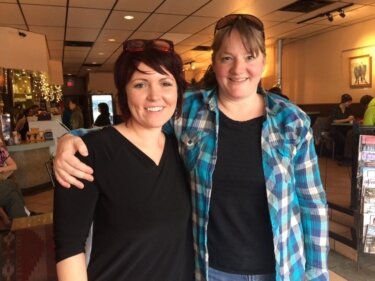Building a home for new approaches to journalism
...and why we need you to help us figure out our next steps.

It wasn’t until the morning after that it really sank in. Counter to all I believed possible, Trump won the election. I was stunned. What did this mean for me as a woman? A mother? A journalist?
As I voraciously consumed the ensuing journalistic teeth-gnashing about the media’s role, I kept coming back to this explanation: Trump was elected by a large population of disenchanted Americans who felt left out and distrustful of mainstream politics and media. Journalists and politicians both failed to represent them. The result was a deeply divided country in which suspicion of “the other” was too easily harnessed by a political bully.
From our vantage point in Canada, it is comforting to tell ourselves that we’re different. After all, during our last federal election, Canadians soundly rejected former prime minister Stephen Harper’s idea for a hotline to report our neighbours for “barbaric cultural practices.” Yet the fact that Harper’s campaign team even attempted to stoke racial hatred suggests a less comforting reality: that the same nasty undercurrent that reared its head during the American election exists here too, and our civil discourse is fragile and not to be taken for granted.
Give us your feedback!
At Discourse Media, we’re building a home for new approaches to journalism that connect us rather than fuel division. Just as we invite audiences to get involved in our reporting, we want our community to weigh in on our newly relaunched digital presence to help shape our next steps. Help us figure out how to best build a media company for the future.
As the morning after matured into lunch, my initial despair dissipated, replaced by stubborn determination. What we’re working towards at Discourse Media seems more important than ever. We’re building a home for new approaches to journalism that look beyond conflict-driven daily news cycles. We want to rebuild trust between journalists and communities typically left out of our national discourse.
 All of this coincided with the relaunch of Discourse’s website and brand. For months we’ve been working on a new digital presence, but the process has been about much more than simply designing a new website. We’ve been rethinking who and what we are, how we can provide value to Canadians with our journalism, and how we want to grow in the future. And the moment of reckoning Trump triggered in journalism circles clarified a few of these things for me.
All of this coincided with the relaunch of Discourse’s website and brand. For months we’ve been working on a new digital presence, but the process has been about much more than simply designing a new website. We’ve been rethinking who and what we are, how we can provide value to Canadians with our journalism, and how we want to grow in the future. And the moment of reckoning Trump triggered in journalism circles clarified a few of these things for me.
Canada and the media
How did the media become so disconnected from those who voted for Trump? The impact of social platforms on our reading habits was surely a factor. We’re increasingly finding ourselves in Facebook-enabled silos where we only encounter the views of those we agree with. With our fragmented media consumption, whether the so-called “mainstream” even exists anymore is arguable. As Joshua Benton observed at the Nieman Journalism Lab, as a result of community newspapers closing and journalists being laid off, the news business is more concentrated than ever in “New York, Washington and a few other cities with oceanfront views.” Rural audiences aren’t seeing their perspectives reflected in “mainstream” publications.
This challenge is arguably more acute in Canada given our vast geography and diverse population. The difference is that perspectives and stories from the hinterlands have never substantively informed the vast majority of our media, which is produced within kilometres of the 49th parallel. We have CBC bureaus throughout the country, sure, but many were hollowed out by the Conservative government’s funding cuts. Our “national” newspapers don’t offer much in this regard. The Globe and Mail’s CEO and publisher Phillip Crawley has openly said he is only interested in readers who earn six figures. And with Postmedia teetering on the edge of bankruptcy, the future of the more than 250 newspapers the chain owns is uncertain.
The impact on communities that lose their journalism infrastructure goes beyond whether there is a watchdog holding town council to account or not. New research by the Pew Research Center shows that civic engagement is closely linked to local news consumption. Most striking to me was that those who consume local news are more likely to feel connected to their communities. In other words, local news is part of the ecosystem that connects us to our neighbours — the very ecosystem that seemed to break down during the U.S. presidential election. Community engagement was closely linked to trust in media.
Building a media company for the future
As the Discourse team rethinks our value proposition to Canadians, I’ve realized that the core challenge our organization exists to address is trust in media and the impact it can have on community connectedness. We recognize that trust is at an all-time low and that we need to rethink our approach if we hope to regain that trust. We know that media can play an important role in connecting community members as they grapple, together, with complex challenges. We want to create journalism that helps us break down those Facebook echo chambers.
That’s why our guiding principle when crafting stories is empathy. When done well, this approach to journalism goes beyond simply causing an audience to feel compassion for a voice or character impacted by the issue reported on. It is journalism that features complex characters with complex motivations and avoids oversimplifying conflict. It uses multimedia storytelling formats. It “sets the table” for constructive dialogue by enabling audiences and communities to imagine where multiple stakeholders from different backgrounds (political, ethnic, socioeconomic, generational) are coming from.
So if “setting the table” is what we’re after, here’s the how: our thesis is that opening up the reporting process to our community — the people formerly known as “the audience” — will enable us to produce journalism that is more relevant to their needs and is more effective at building empathy and trust. We’re doing this through our engagement practice: we listen before reporting, involve our audience in editorial decisions, and participate in dialogue following publication. In other words, instead of simply broadcasting content we think is important, we ask our community how we can add value to existing conversations about complex challenges facing them.
How we're engaging communities
As an example, Discourse’s community engagement editor Brielle Morgan has spent the past four months embedded in the youth-in-care community, listening to young people in foster care, advocates, parents and others. We haven’t produced any journalistic content yet, but when we do, we want it to live up to the community’s mantra: “Nothing about us without us.”
Reporter Wawmeesh Hamilton, who describes himself as “a journalist who happens to be Indigenous,” identified that one barrier to Indigenous people being a larger part of Canada’s national discourse was the lack of clarity about whether freedom of the press applies to First Nations governments. After months of talking to people, Discourse published a five-part series on his findings and Wawmeesh is now devoted to sticking with the subject for the next several months to participate in constructive dialogue between First Nations leaders and media.

Another story: Discourse reporter Trevor Jang recently went on what felt like a strange assignment to him. He was tasked with spending 15 days in northern B.C. to find out what was important to people there. He was given no specific assignment, no angle to pursue.
He reported on his trip through a Facebook page where he invited community members to discuss what matters to them and what they’d like to see a Discourse reporter investigate. Because we’ve previously reported on resource development in the region, an inevitable debate about a proposed liquefied natural gas (LNG) plant broke out on the Facebook page. Two people, a conservationist and a pro-development advocate, got into a back-and-forth. Here’s what happened next, in Trevor’s words:
They both found themselves boxed into the two extremes of "for" and "against." Yes and no. No middle ground. But this morning they met over coffee and got to know each other. They found common ground. They both want a happy, healthy and wealthy North. They just have different ideas about how to get there. While they still disagree about LNG, they have agreed to meet again to see if there are projects they can work on and support together.
And since Shannon has relationships through the Skeena Watershed Conservation Coalition, and Lucy has her company Spirit Strategies that focuses on community and stakeholder engagement, Aboriginal economic development and skills training, they just might be able to accomplish something big together down the road.
But for now, they are going horseback riding next weekend.
When I read this report on Trevor’s Facebook page, I was delighted. This is what we mean by impact. This is exactly what we aim to do through engagement journalism practice. Of course, these are just two people. We have a lot of work to do to scale our approach if we hope to create a media company that supports all Canadians, from those in positions of influence who live in our urban centres to those in small towns in northern B.C., to better understand each other as we face the considerable challenges before us.
We’ve got to start somewhere, and our website is one of the first steps. So when we were working on our new brand and digital presence, we decided to take the same approach that we do with our reporting. Rather than brainstorm, design and tweak a fully-cooked product before releasing it to the world, we are asking our community to join in the process. The new “face of Discourse” that you see on our website is not finished. Just as we invite audiences to get involved in our reporting, we want you to help shape our next steps by weighing in here on our relaunched digital presence as we build a media company for the future.
